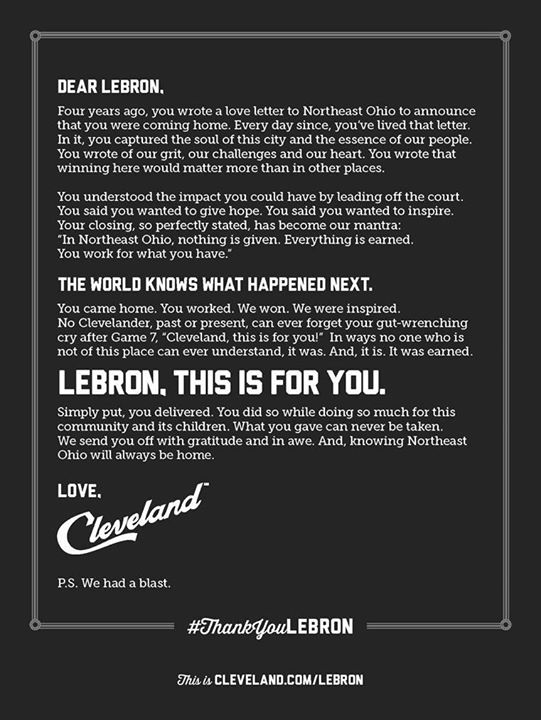Lebron: The Story of the Summer
If you are from Ohio, particularly Northeast Ohio, the story of the summer was Lebron James’ move to the L.A. Lakers.
I have spent countless hours watching Lebron and listening to my son’s details analysis and play-by-play of everything Lebron over the years.
I also have some students at school who loved to talk about him, and obviously, we have some catching up to do when we get back.
With one particular class in mind, my 8th graders who I know well, I decided to use Lebron’s stories – leaving Cleveland and his new school in Akron, Ohio – as our first unit this fall. It will serve as a review of some language and literature terms, allow me to observe them working in groups, and provide some good conversation and debate.
I have four reading resources ready to go:
#1 and #2 – Newsela has two articles I’ve chosen to use. One on each of the stories mentioned above. I love Newsela for many reasons, particularly the ease of leveling text by Lexile.
#3 – I am using the text of Lebron’s essay from 2014 when he announced his decision to return to Cleveland. I ran this through the Free Lexile Analyzer and found the Lexile range to be 600-700L.
#4 – I am using the letter to Lebron “from Cleveland” that I found on Instagram and in Sports Illustrated magazine. The Lexile for this text is 400-500.

Below are the activities for this unit, which I expect to take about 5-6 days:
1. Students will complete a class flow chart activity I’m doing over several major summer stories. (More on that this weekend.)
2. Language Review Scoot based on the “Dear Lebron” letter.
3. Close Reading Activity based on Lebron’s “I’m Coming Back to Cleveland” essay.
The text and the activities can be found in PDF form by clicking the links below:
Lebron James Student Response Sheets
Dear Lebron, (both texts are on here)
4. The Newsela Articles will be read in small groups or independently using the PRO features our district has access to.
Depending on your students, these activities could be a fun, high-interest activity for the start of the year.
Just a few fun facts about what I have in common with Lebron James:
- His number is 23, and this is my 23rd year of teaching.
- He is going to L.A. and I teach L.A.
I thought I’d share those cheesy facts with my students, but first I ran it by Ian this morning to see his reaction.
Me – Ian, do you know something Lebron and I have in common?
Ian – You’re the Greatest of All Time?
Ah, not what I was thinking, but I’ll add that to the list.
The Day I Gave All My Students iPhones (Part of the IXL Series)
I took a big risk a few months ago by putting on my cheesy teacher hat and pushing out an idea that came to me as I was trying to encourage my students to use IXL.
In a grand opening-of-class announcement, I told all of my students, “Ok guys, I’ve been thinking and I have a plan. You are all getting an iPhone. I got this deal on iPhone 1s, and you will get to add apps to your phone for your hard work on IXL.”
Oh, the look on their faces!
I then proceeded to pass out white paper copies of this iPhone template I tweaked from Coffee, Cats, and Crayons on TPT.
Oh, the look on their faces!
“Now, I know this is an old model, and it only comes in white with black lettering, but I talked to people in the main office and they assured me that they would be coming out with a new model soon. They also promised new colors were in the works.”
I had to keep it up…
“Please be very careful with these phones. I didn’t get insurance on them. So if you lose your phone at any time you will get a new one but you will have to your apps will be wiped clean.”
And we were rolling…
The iPhone incentive is working well in my room. Students earn one sticker for each LA skill they complete to satisfaction. As I wrote before, I’m flexible with the SmartScore to accommodate all learners.
I check their progress once a week by customizing the the reports and award apps/stickers in a little one-on-one conference.

A student selects his apps for his latest progress on his IXL ticket and gets to upgrade.
Once their iPhone 1 is filled with 12 apps, they upgrade to an iPhone 2 and so on.
Their old phone goes in the “showcase” under the dry erase board.

Only a snapshot of the dozens of iPhone 1s and 2s that have been retired in the showcase.
Students receive a prize for upgrading, as well.

This was a fun day ~ The day I shared all the prizes connected to the upgrades. They got a kick out of this.
When the first student upgrades to a new phone, I present our newest model: “The iPhone 2 has just been released. It comes in a lovely Butter Yellow.”
The iPhone 3 is “Peppermint Pink.”
Recently I had one student upgrade to the “Mint Green iPhone Cuatro.” He is the the envy of many; not because he got a prize from Prize Box 1 but because he was the first.
I’ll admit, this is an incentive program that takes dedication and organization on my part. I’ve tweaked it a little by adding special BONUS apps throughout the week such as:
- Scoring a 100% in Newsela Quiz earns you 2 apps, while a 75% earns you 1 app.
- I had a tiered level of rewards for growth in winter MAP scores.
- Perfect attendance by the whole class for the week or 100% completion of homework.
- Sometimes just helping out in class or being a leader earns you an app.
Playing the part of a Verizon salesperson is challenging, but I’ve spent enough time in Verizon to know key phrases that make it feel authentic, which makes it even funnier.
Almost all of my kids love it.
Secretly, even the ones who act like it’s dumb? Well, they love it, too. They even tell me what their stickers represent. (If they get a little emoji with headphones? “Oh yes, I got my music app!”)
Oftentimes, making a reward silly is all it takes to reel in a middle schooler.
Sometimes, it’s about making the experience seem like a reality. Not many of my kids have iPhones, so this is almost like having the real thing – even if it’s just within the walls of my classroom.
Always, it’s about ensuring everyone sees some success and everyone gets credit for working hard.
What do you think of my incentive plan?
Could it work in your classroom?
Do you do equally silly or crazy ideas to motivate students?
I’d love to hear your ideas, questions, and thoughts in the comments!
RELATED POSTS:
IXL Bulletin Board
Blog Series: IXL in My Classroom
Making Text Connections (Handouts and Tips)
To improve reading comprehension, I will often ask students to make connections to their own lives.
This simple handout works for any text. (See the links at the end of this post.) I have edited this handout several times to get the responses I want.
Four things I’ve learned about this activity that are worth sharing:
1. Avoid any sort of question that allows students to find a loophole.
Ex. “Does this text remind you of anything in your own life?”
Is this text similar to anything you’ve read before?
What does this text remind you of from tv, the news, or Channel One?
My students were quick to figure out they could write “No,” “Nope,” “Yes”, or “Nothing really” as an answer.
2. Require students to give a specific example from the text.
Otherwise, you’ll get answers like these:
“She did the same thing I did.”
“When I had a dog.”
“Yesterday on Channel One they said the same thing.”
3. Two out of three isn’t bad.
For some of my IEP students, I allow them to choose two of the three connections. This allows them to have a choice and is a slight modification that still requires them to think about what they have read.
4. It’s important for students to share their responses.
Sharing can be a whole group discussion, a pairing of students, or a rotation. Allowing students to share does two things. First, it sends the message that their connection is important. Secondly, it gives others an opportunity to look at things from a different perspective or spark their own connection if they had trouble.
PDFs for you to download:
Making Text Connections – This is the basic template following the ACE model.
Making Text Connections with LINES – This is a modified version for students who need the lines to write on. The prompt is slightly different. This is the version my Alternate Assessment students received.
How do you get students to make a personal connection to a text?
What do you do if your students aren’t big readers and don’t have a lot of texts to connect to?
How do you explain text-to-world? (This is so difficult for my class!)
Share your thoughts in the comments!

